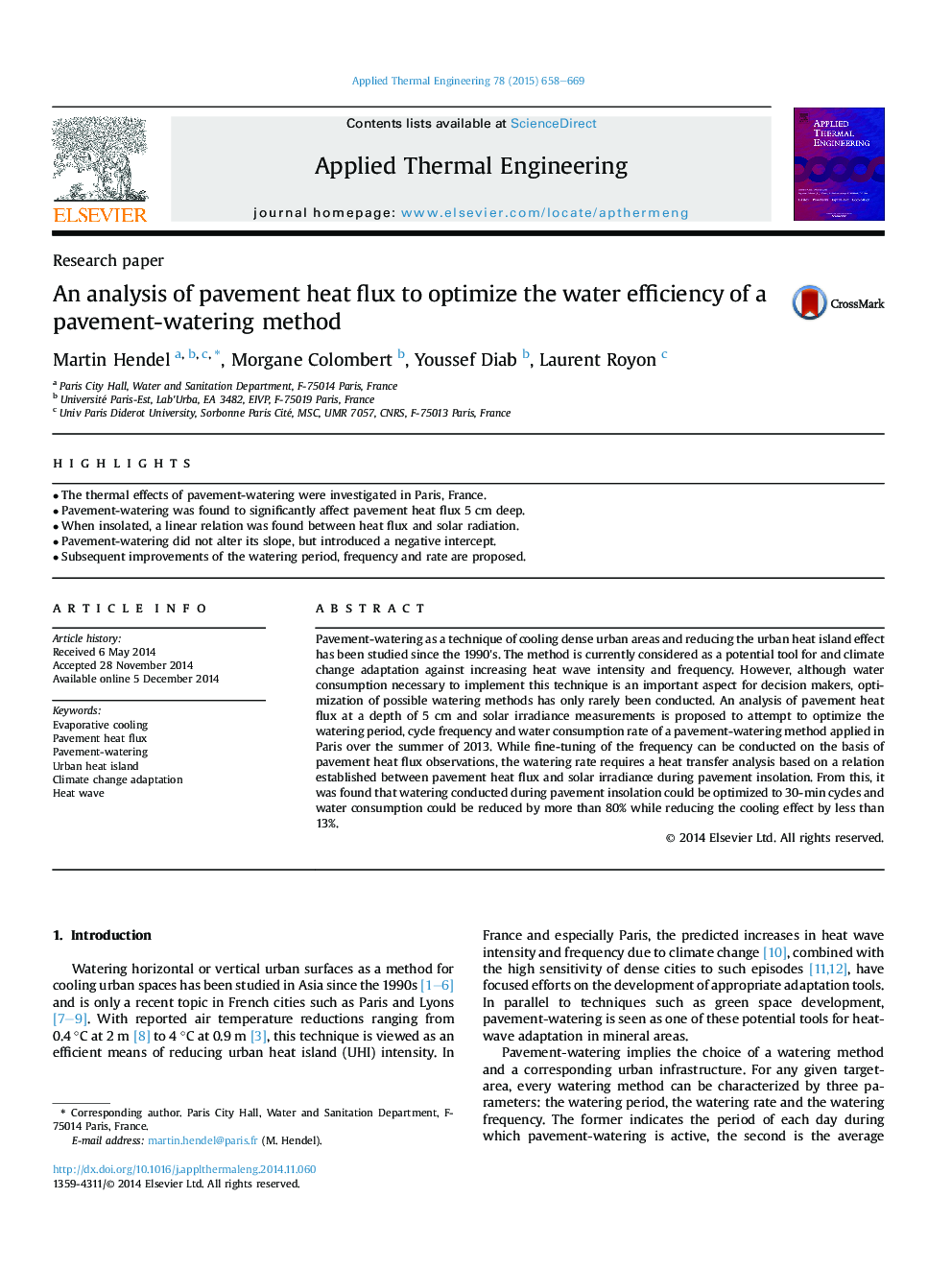| Article ID | Journal | Published Year | Pages | File Type |
|---|---|---|---|---|
| 7049010 | Applied Thermal Engineering | 2015 | 12 Pages |
Abstract
Pavement-watering as a technique of cooling dense urban areas and reducing the urban heat island effect has been studied since the 1990's. The method is currently considered as a potential tool for and climate change adaptation against increasing heat wave intensity and frequency. However, although water consumption necessary to implement this technique is an important aspect for decision makers, optimization of possible watering methods has only rarely been conducted. An analysis of pavement heat flux at a depth of 5 cm and solar irradiance measurements is proposed to attempt to optimize the watering period, cycle frequency and water consumption rate of a pavement-watering method applied in Paris over the summer of 2013. While fine-tuning of the frequency can be conducted on the basis of pavement heat flux observations, the watering rate requires a heat transfer analysis based on a relation established between pavement heat flux and solar irradiance during pavement insolation. From this, it was found that watering conducted during pavement insolation could be optimized to 30-min cycles and water consumption could be reduced by more than 80% while reducing the cooling effect by less than 13%.
Related Topics
Physical Sciences and Engineering
Chemical Engineering
Fluid Flow and Transfer Processes
Authors
Martin Hendel, Morgane Colombert, Youssef Diab, Laurent Royon,
